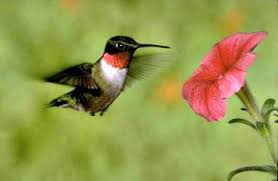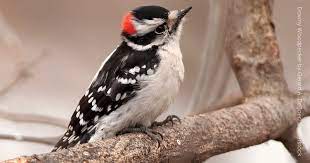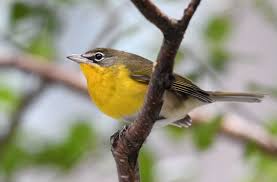Mallard
You'll find mallard ducks near ponds, marshes, streams, and lakes, where they feed on plants, invertebrates, fish, and insects. Mallards are dabbling, or surface-feeding, ducks because they eat by tipping underwater for food—head down, feet and tail in the air—rather than diving. The male mallard duck, called a drake, sports a glossy green head, a white ring around its neck and a rich, chestnut-brown breast. The mottled brown female mallard looks downright dull next to the male's showy feathers.

Ruby-Throated Hummingbird
A flash of green and red, the Ruby-throated Hummingbird is eastern North America’s sole breeding hummingbird. These brilliant, tiny, precision-flying creatures glitter like jewels in the full sun, then vanish with a zip toward the next nectar source. Feeders and flower gardens are great ways to attract these birds, and some people turn their yards into buzzing clouds of hummingbirds each summer. Enjoy them while they’re around; by early fall they’re bound for Central America.

Downy Woodpecker
The active little Downy Woodpecker is a familiar sight at backyard feeders and in parks and woodlots, where it joins flocks of chickadees and nuthatches, barely outsizing them. An often acrobatic forager, this black-and-white woodpecker is at home on tiny branches or balancing on slender plant galls, sycamore seed balls, and suet feeders. Downies and their larger lookalike, the Hairy Woodpecker, are one of the first identification challenges that beginning bird watchers master.

Northern Flicker
Northern Flickers are large, brown woodpeckers with a gentle expression and handsome black-scalloped plumage. On walks, don’t be surprised if you scare one up from the ground. It’s not where you’d expect to find a woodpecker, but flickers eat mainly ants and beetles, digging for them with their unusual, slightly curved bill. When they fly you’ll see a flash of color in the wings – yellow if you’re in the East, red if you’re in the West – and a bright white flash on the rump.

Yellow-Breasted Chat
The Yellow-breasted Chat offers a cascade of song in the spring, when males deliver streams of whistles, cackles, chuckles, and gurgles with the fluidity of improvisational jazz. It’s seldom seen or heard during the rest of the year, when both males and females skulk silently in the shadows of dense thickets, gleaning insects and berries for food. Larger and chunkier than a warbler, the chat is a widespread breeder in shrubby habitats across North America, venturing to Central America for the winter.

Nonendangered Birds In Missouri
- House sparrow
- American Robin
- Blue Jay
Endangered Birds In Missouri
- Bachman's Sparrow
- Black Rail
- Golden-Winged Warbler